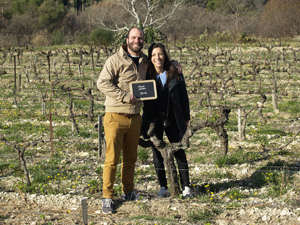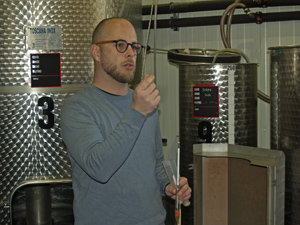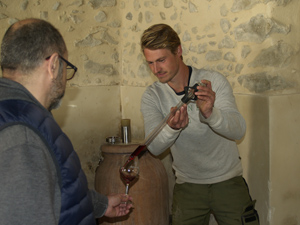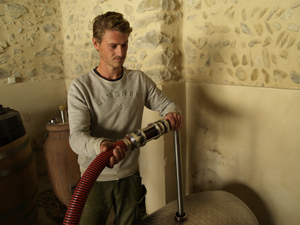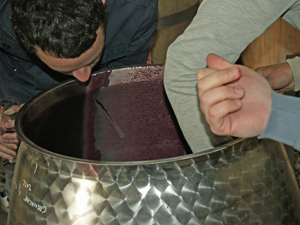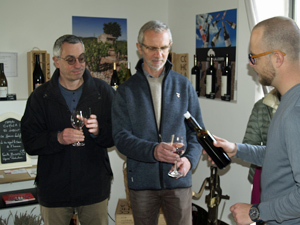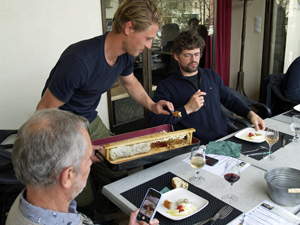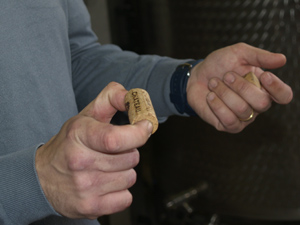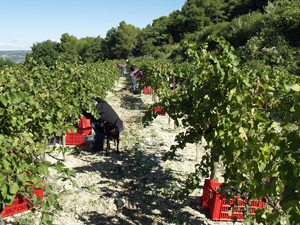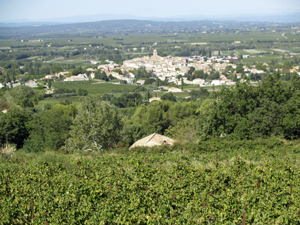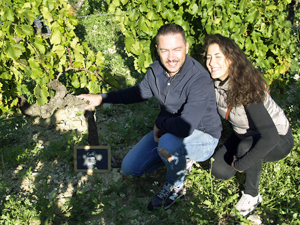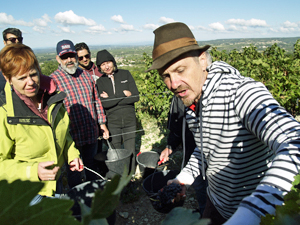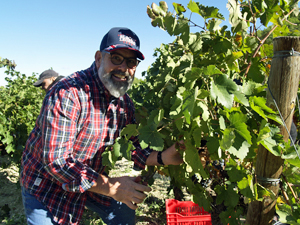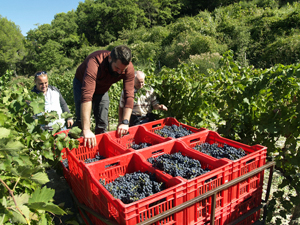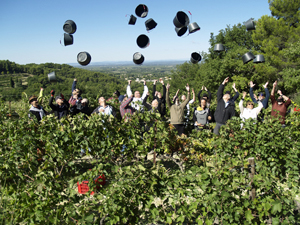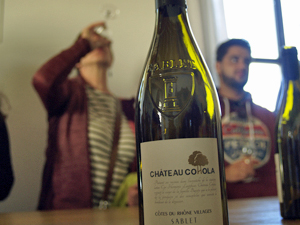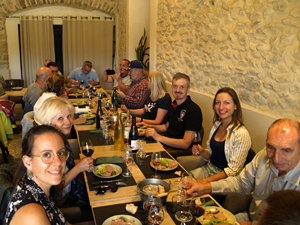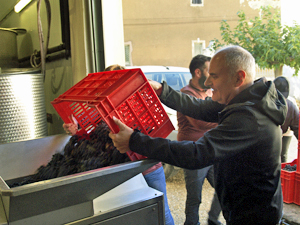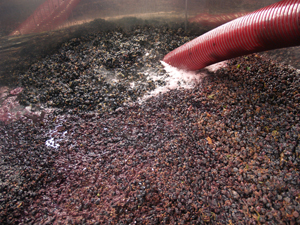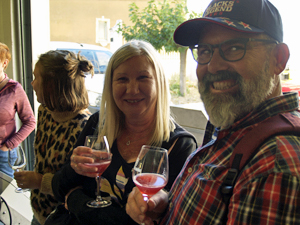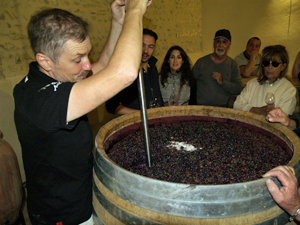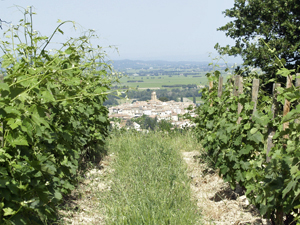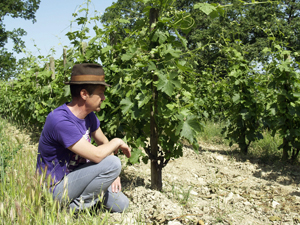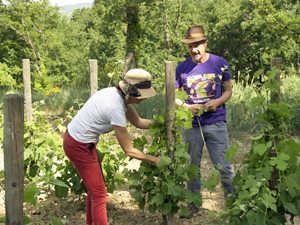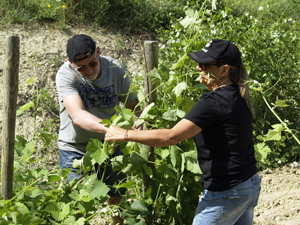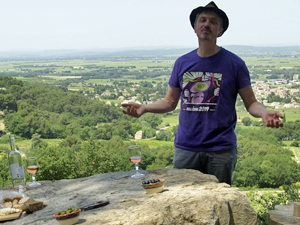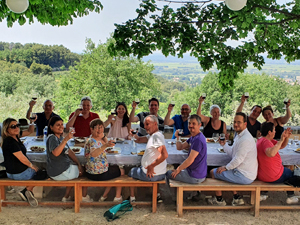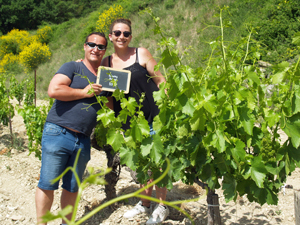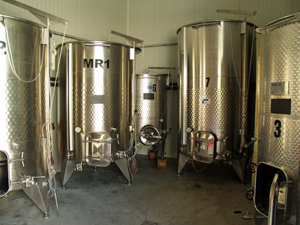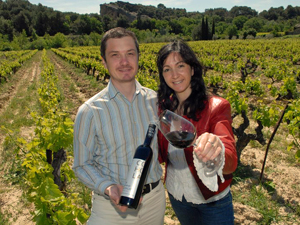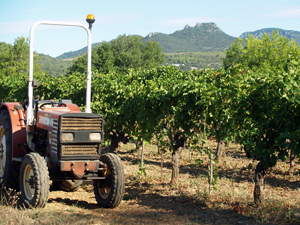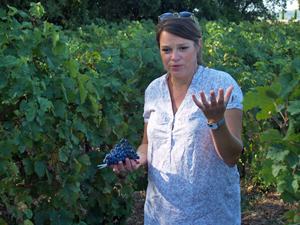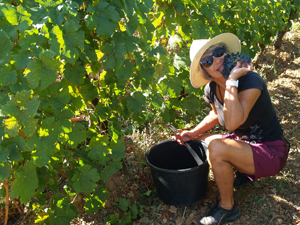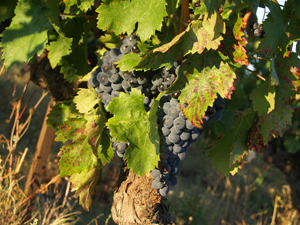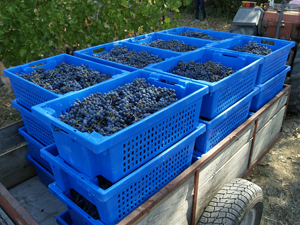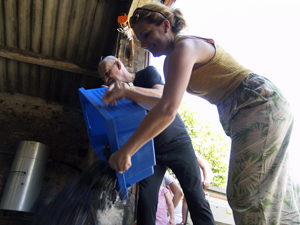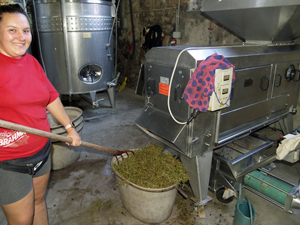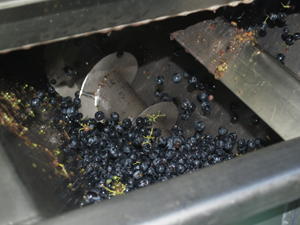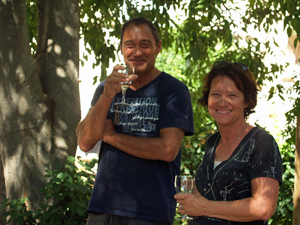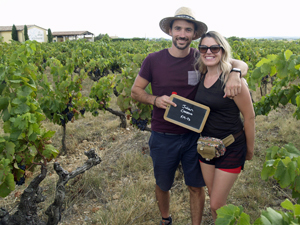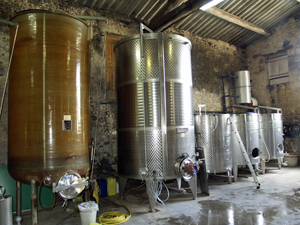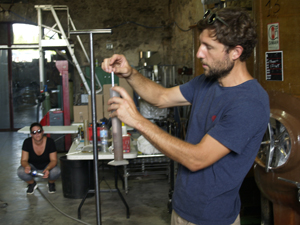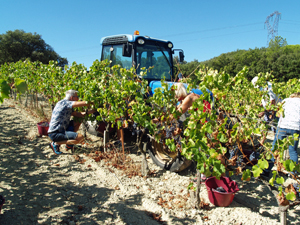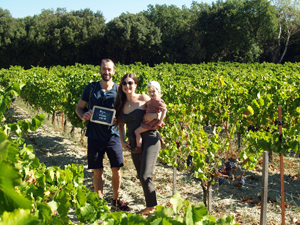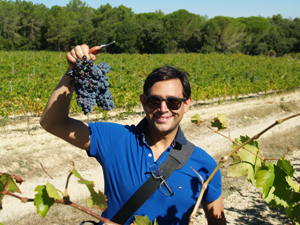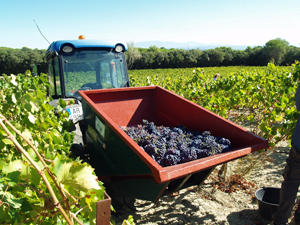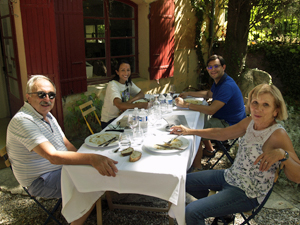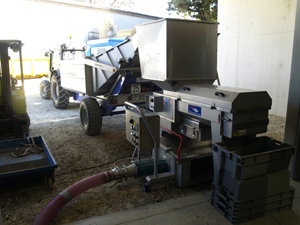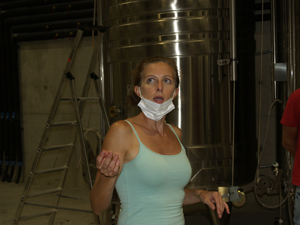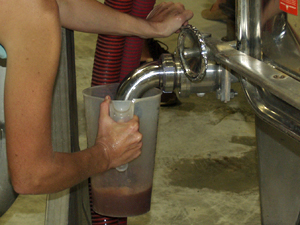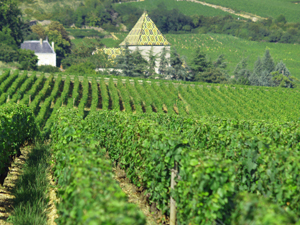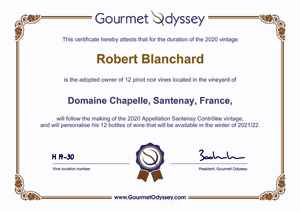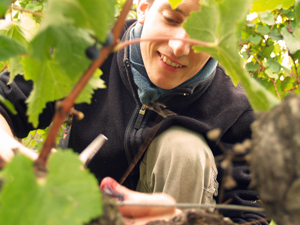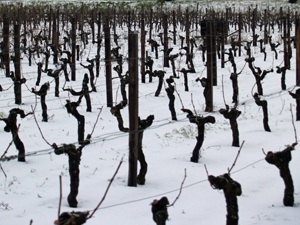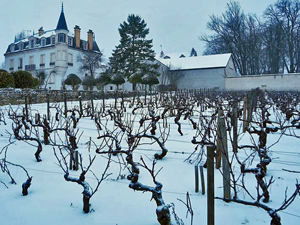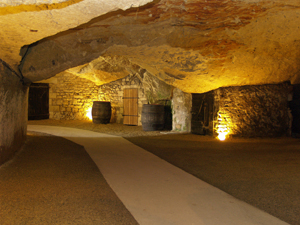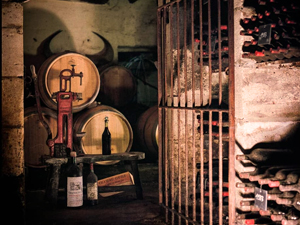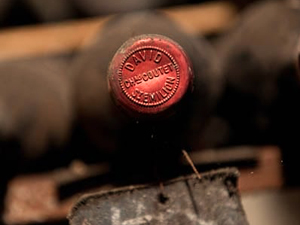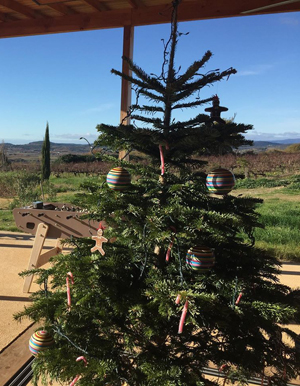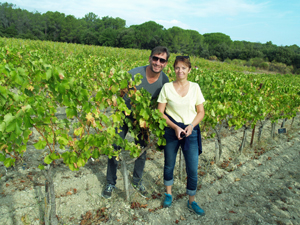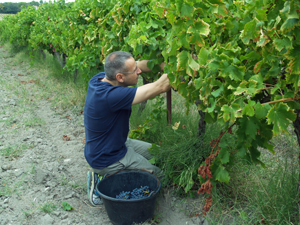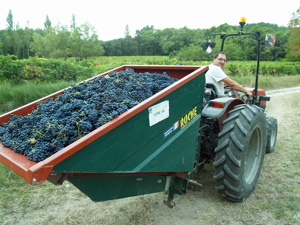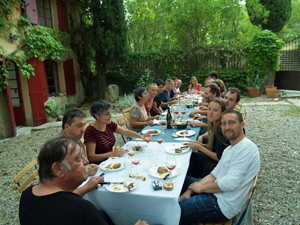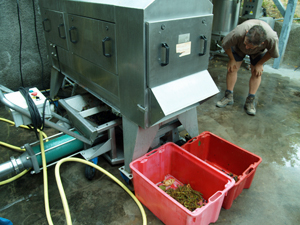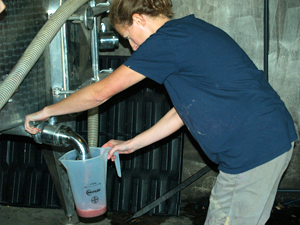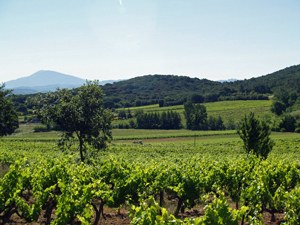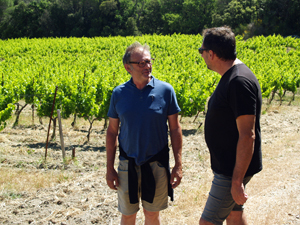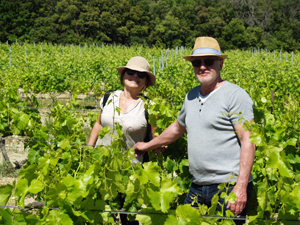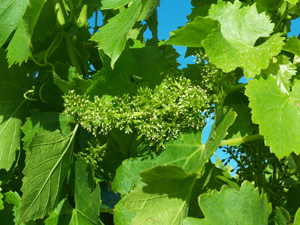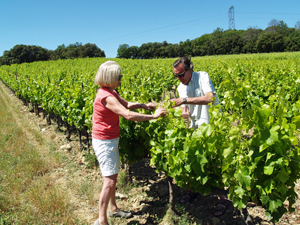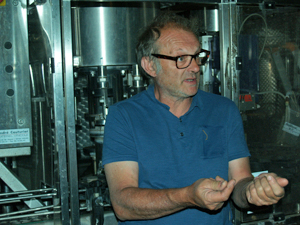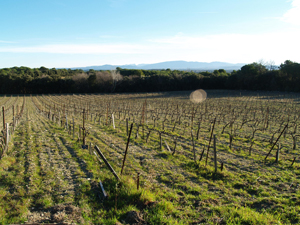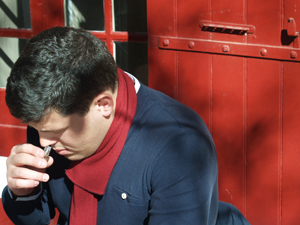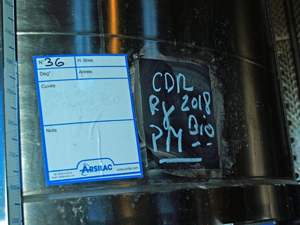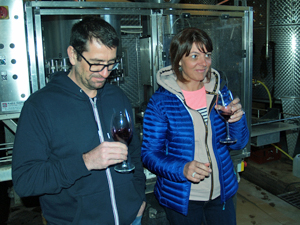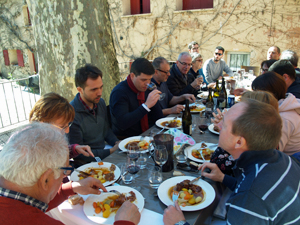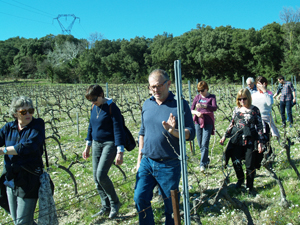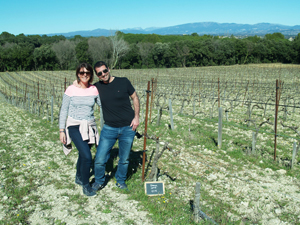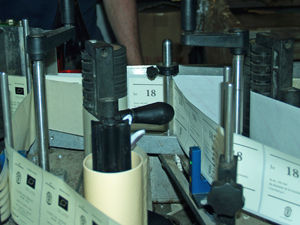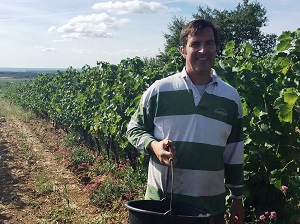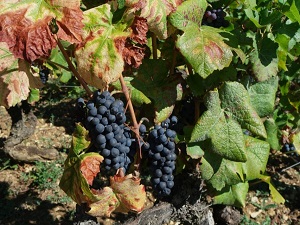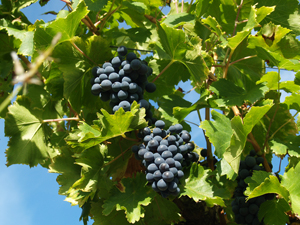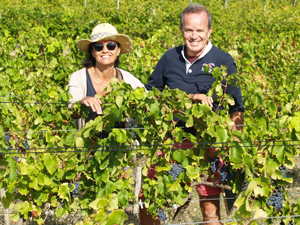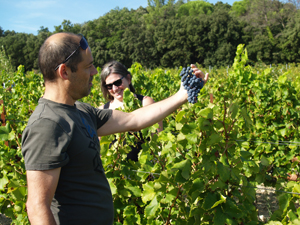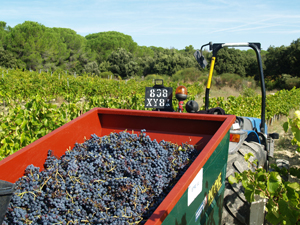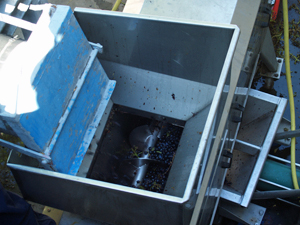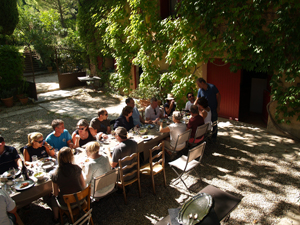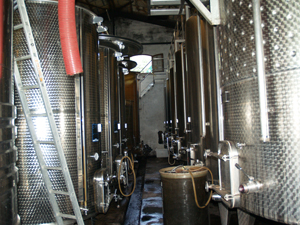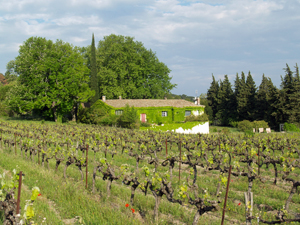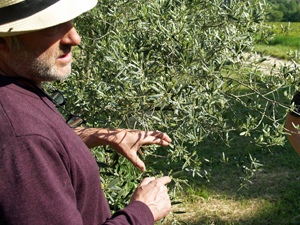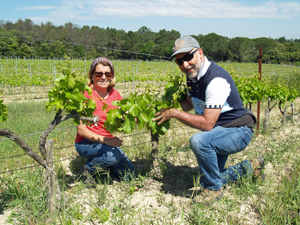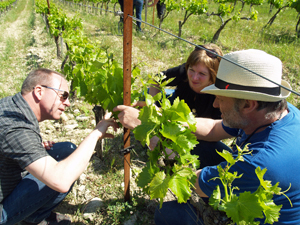We spent an excellent Discovery Experience Day at Château Cohola in the Côtes du Rhône village of Sablet. Accompanied by the winemakers, Cheli and Jérôme Busato, we learnt a lot about their efforts in the vineyard to produce the best possible grapes, and we’ll be sure to better appreciate the bottles of wine that we open from now on!
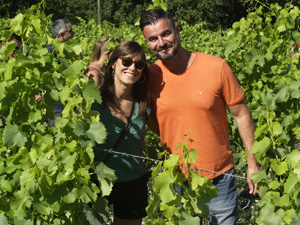
After the introductions to the winery, the winemakers, and the region’s wines, we headed straight out into the vineyard. Our first stop was to visit our adopted vines! Thanks to a small blackboard, we were able to find and introduce ourselves to our micro-plots of vines and take a few souvenir photos.
Cheli and Jérôme explained the work that they had carried out in winter and the start of spring to prune and de-bud the vines in order to reduce the quantity of grapes produced by each vine with the aim of improving the quality.
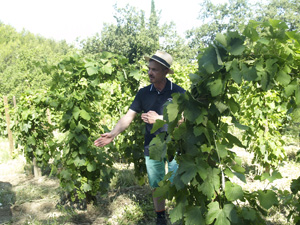
The winery is made up of 15 terraced vineyards, and Jérôme and Cheli showed us the different grape varietals and pruning methods that they use. The vines had grown lots over the past few weeks, and we stopped in front of a plot of staked vines.
Next to each vine was a large wooden stake, or échalas, to which the vine was attached to help support the weight of the grapes and leaves. Our mission was to take the tops of the branches, divide them in two, and weave them together with those from the neighbouring vines to form arches. The arches make the vines more stable, protecting them from the winds that often blow hard in this region, and give some more shade to the grapes to protect them from the sun.
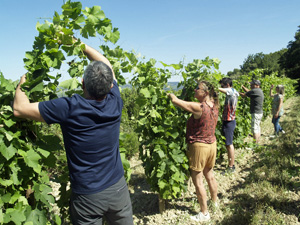
Jérôme and Cheli showed us how to create the arches, and then we spread out between the rows to have a go ourselves. At first, we were scared of damaging the branches, but we quickly learnt that they are stronger than you think, and we started to advance more quickly!
We continued our stroll through the vineyards until we reached the highest point of the estate, where we stopped to admire the wonderful view overlooking the village of Sablet and the plains of the Rhone Valley below. Jérôme enlightened us as to how they work organically and the challenges of doing so, and he explained the work that remains to be done between now and the harvest.
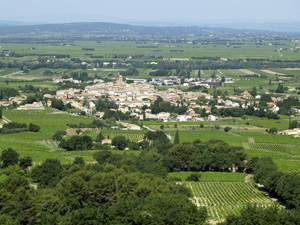
Aperitif time had arrived, and so we made our way down to the village and met up in a local restaurant for a nice fresh glass of 2022 Sablet rosé from the winery which has the peculiarity of being a blend of press and bled rosé wines.
With the aubergine papeton starter, Cheli served us their 2022 Sablet Cuvée Fruit, a light and fruity red wine that she had made specially for drinking chilled. Absolutely fantastic! With the chicken Provencal main course, we tasted the 2019 vintage of the Sablet wine that has been chosen for the clients of the Gourmet Odyssey Wine Experience.
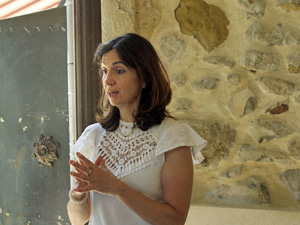
Cheli and Jérôme are also beekeepers, and so with the goat’s cheese, they honoured us by serving squares of honeycomb. An unforgettable experience, accompanied by the excellent 2022 Sablet white wine. And with the home-made cherry clafoutis dessert, we tasted the powerful TBF wine that had been aged in wood, clay, and steel cotenants.
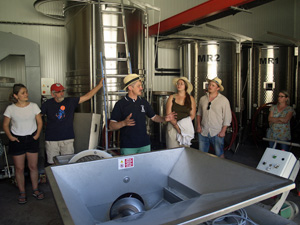
After lunch, we went to the chai. Jérôme showed us where the grapes will be received at harvest time and gave us a quick introduction to the work in ageing wine. We’ll spend more time here in September during the Harvest Experience Day and in spring for the Vinification Experience Day.
Many thanks to Cheli and Jérôme for this fascinating day spent in this wonderfully relaxing spot.



